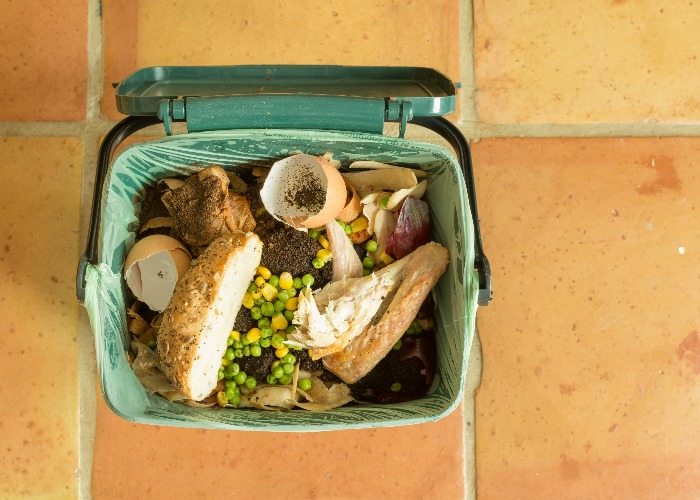Shopping list, portions, ugly fruit and veg: how to cut your food waste

The average household throws away £1,000 worth of food a year, but there are plenty of ways to reduce the amount of food we waste.
The waste charity WRAP has released data that suggests the average person throws away a staggering £250 worth of food each year.
That's £1,000 for a family of four, every 12 months!
Unsurprisingly, the most common items we waste are fresh produce. According to WRAP's data, these are the top 10 most wasted food and drink items that could have been eaten:
- Potato (fresh);
- Bread;
- Milk;
- Meals (home-made and pre-prepared);
- Fizzy drinks;
- Fruit juice and smoothies;
- Pork/ham/bacon;
- Poultry (chicken, turkey, duck);
- Carrots (fresh);
- Potato (processed).
Cutting down on food waste
First off, I think it’s important to be realistic.
No matter how good our intentions are, for many of us, a little food waste is almost always going to happen.
The issue is the scale of food waste currently, which is simply unsustainable.
So what can we do to reduce the levels of food waste from our own food shopping and ensure that less of our money ends up being thrown away?
Get organised
Speaking for myself, I know for a fact that my family waste more food when we don’t have a plan in place for what meals we are going to eat over the next couple of days.
I am particularly guilty of picking up certain food items ‘just in case’, only to end up missing out on eating them before the use-by date is reached.
In recent months we have been much more organised on this front, in part because we now do two smaller shops a week rather than one big one.
It means we are less at the mercy of iffy use-by dates on the perishable items from Tesco’s Click & Collect team as well.
Check the dates
If you’re shopping in person, then being a bit more thorough in checking use-by dates is a smart move.
It can be easy to just drop that packet of mince in your trolley without thinking, but if you have a meal plan already sorted then you’ll know exactly when you will need that mince.
Make sure the dates line up, and there’s less chance of perfectly good items going to waste.
Don’t be so choosy
Are you a bit of a picky eater? I don’t mean having an aversion to things like mushrooms ‒ that just makes sense ‒ but rather, being a bit choosy over the appearance of certain foodstuffs.
I know I am guilty of it at times, turning my nose up at a perfectly good Granny Smith apple because it is a little bruised in places. But being overly picky in this way contributes to far too much food waste.
Some stores actually make a virtue of flogging ‘ugly’ food, selling ‘wonky’ fruit and vegetable boxes.
Make the most of your freezer
It can be all too easy to view the freezer as the place where only specifically frozen goods go ‒ your chicken dippers, and the like.
However, the freezer can be a fantastic tool in the fight against food waste.
You can freeze leftovers from your main meals and then have them later on in the week, rather than let those leftovers go to waste.
Freezers can be great for getting more out of dairy items and even bread, as well.
Get measuring
If you don’t fancy keeping your leftovers for future meals, then you will need to reduce the chances of having any leftovers in the first place.
And that means being a bit more on the ball with your portion sizes.
I have started weighing out my food, and while that’s been motivated primarily by weight loss goals, it has had the pleasing side effect of reducing waste too.
There will be an element of trial and error at first, but once you have an idea of how much pasta you need for a family of four, for example, you can eliminate the chances of cooking too much.
Have a ‘use up’ day
Off the back of its food waste research, Tesco has launched a campaign promoting ‘use up’ days and it’s an idea that I really like.
The thinking is that once a week, you make a meal which is simply based around using up what you already have in the kitchen.
Sure, it might be a bit thrown together ‒ accompanying a curry with spaghetti rather than rice, because it needs using, for example ‒ but it is still better than seeing that food end up in the waste.
It’s something that my wife and I used to do before we started having children, and I’m keen to reintroduce it to our own routine.
Comments
Be the first to comment
Do you want to comment on this article? You need to be signed in for this feature